Drawski SA is a qualified foundry, producing iron castings for the automotive industry, industrial and water and sewage fittings as well as the machine industry, including agricultural machinery. After more than 160 years from its establishment, after surviving post-war nationalization, the economic downturn of the early 1990s, the crash in agriculture and the repair and restructuring process, the foundry in Drawski Młyn produces 35 tons of castings for customers from all over the world every day.
Development and technologies
In recent years, the foundry has invested PLN 25 million in the company’s development. It launched, among others new automatic molding lines, sand quality control system, shot blasting machines and cast grinding stations, including a dust removal and ventilation system, a suspension paint shop for water-based paints and a cupola dedusting system with afterburning of cupola gases. It has also invested in a control system, thanks to which the information obtained at individual stages of production allows for corrections in technological processes, elimination of defective castings and more efficient completion of shipments.
“Two of these investments decided the fate of the foundry,” says Ryszard Kielczyk, president of Odlewnia Drawski. – The first is the cupola de-dusting installation, thanks to which we have obtained the legal possibility of producing over 20 tons of metal per day. The second is the Disa Match automatic molding line, which allowed for the elimination of time-consuming and difficult operations during forming, pouring and breaking molds. As a result, the number of employees decreased by one hundred people. However, if it were not for these investments, today we would neither be able to hire so many employees, nor would we be profitable ”.
The foundry produces gray cast iron and nodular cast iron using the duplex process (cupola plus mains frequency induction furnace) to melt the metal. The entire process of making the molds, transporting them and breaking them out has been mechanized. Currently, the foundry is equipped with two automatic lines of the Danish company DISA, i.e. a line with a vertical division Disamatic MK5 and a line with a horizontal division Disa Match 28 ” × 32 ”. Both have separate automatic processing of molding sand. The cores are made of hot and cold core boxes with the use of Leampe machines. The castings are cleaned on cleaning machines (through-hole and chamber), manually sanded and painted with water-based paints in an automatic hanging painting line. The company is still looking for the best materials and technologies and implements solutions proposed by the companies that offer them. He modifies them according to his own needs, which results in frequent changes in the molding line cycle, operation of various components or technologies. An example is the proprietary systems for pouring and venting molds, the use of coolers on a vertical line and joining the cores.
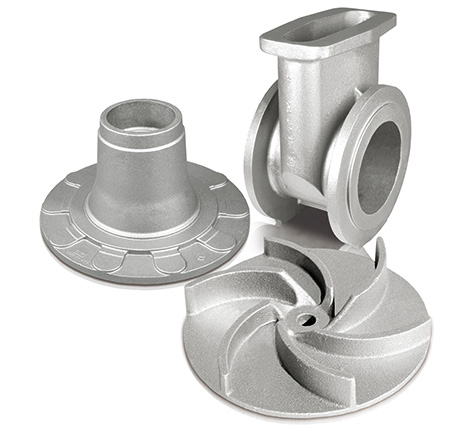
The quality of castings
The quality of the company’s products is guaranteed by the Quality and Environmental Management System ISO 9001 and ISO 14001, well-prepared staff and the company’s philosophy. “The expectations of our customers are growing, we produce castings that are technologically more difficult and with overstated parameter tolerances,” says Ryszard Kielczyk.
In the casting production process, due to the inaccessibility of the interior of the mold and the processes that take place during pouring and solidification, none of the elements of the assessment that is performed before pouring the mold can be ignored. The quality of the charge materials determines the melting efficiency, chemical composition of cast iron and its physicochemical parameters. The quality of the foundry tooling, molding sand, additives used thereto and the technology of preparing molding and core sand determine the quality of the mold and cores, and this has an impact on the number of defective castings. The technical condition of automatic lines, their ongoing service and inspection, the skills of maintenance technicians and operators as well as their reliability determine the failure-free operation of machines and the defectiveness of castings.
“When assessing the possibility of cooperation, the client should assess whether his product will be important in the production program, or whether the expenses for foundry tooling will pay off quickly,” explains Ryszard Kielczyk. – The more modern the foundry, the more expensive the tooling and the more economical it is to commission only large series of castings there. Better equipment means a higher standard and quality, but also a higher price. Although the customer does not always want the castings to be of the highest quality, they will be cheaper in a less modern foundry. However, more and more industries such as automotive, household appliances and plumbing are looking for high quality at a low price ”.
In order not to make mistakes when choosing a foundry, the client may contact, for example, the Foundry Chamber of Commerce, the Polish Association of Technical Founders, the Foundry Institute in Krakow or a technologist from a good foundry. The information obtained will allow to locate the castings in the company best suited to the characteristics of the casting and the buyer’s capabilities.
At the Drawski Foundry, the ordering party receives comprehensive services, ranging from assistance in the design of the casting, through the development of technology, making a drawing in 3D technique, making tooling: models, sub-model plates, core boxes in the CNC machining center, completion of shipments and transport, to efficient order handling and complaints. and assistance in changes to the structure, documentation and types of cast iron. Machining is either in-house or in cooperation. The company also provides uncomplicated assembly. Thanks to the IT B2B system, the customer can analyze the stage of order fulfillment on an ongoing basis. At the end of the process, he receives the necessary test documents, a measurement and quality certificate.
Natura 2000
The Drawski Foundry is located on the border of the Natura 2000 area, on the Noteć River. It is the only “heavy” plant in the area and is in the area of constant monitoring of environmental protection services. Constant observation and pro-ecological awareness of the company determine that the foundry processes are hermetic, so that there is no emission of dust, gases and noise. The foundry has an integrated permit for the production of castings and an integrated quality system according to ISO 9000 and ISO 14001 environmental protection standards. It has its own sewage treatment plant and industrial water cooling plant, thanks to which the discharge of spent cooling water is completely limited. The constant improvement of the quality of castings reduces dust and gas emissions, the amount of waste generated and energy consumption.
The company uses very effective dry dedusting of cupolas with combustion. During the processing of molding sand and their transport, as well as making molds, pouring them, transporting and knocking out the castings, gases and dust are extracted and cleaned in dry dust collectors with fabric filters. Dust emission does not exceed 10 mg / m³ and meets the environmental protection requirements. Cleaning of castings, grinding and painting are carried out on new devices with full protection of dust emissions using dry dust collectors. During these stages the emission of dust does not exceed 2.5 mg / m³.
Environmental protection is also influenced by an innovative production line that does not have mass transfer, thanks to which primary and secondary dusting has been limited. Fewer defective castings reduce emissions during punching, cleaning and grinding operations. In turn, replacing the roof in the foundry building reduced noise emissions.
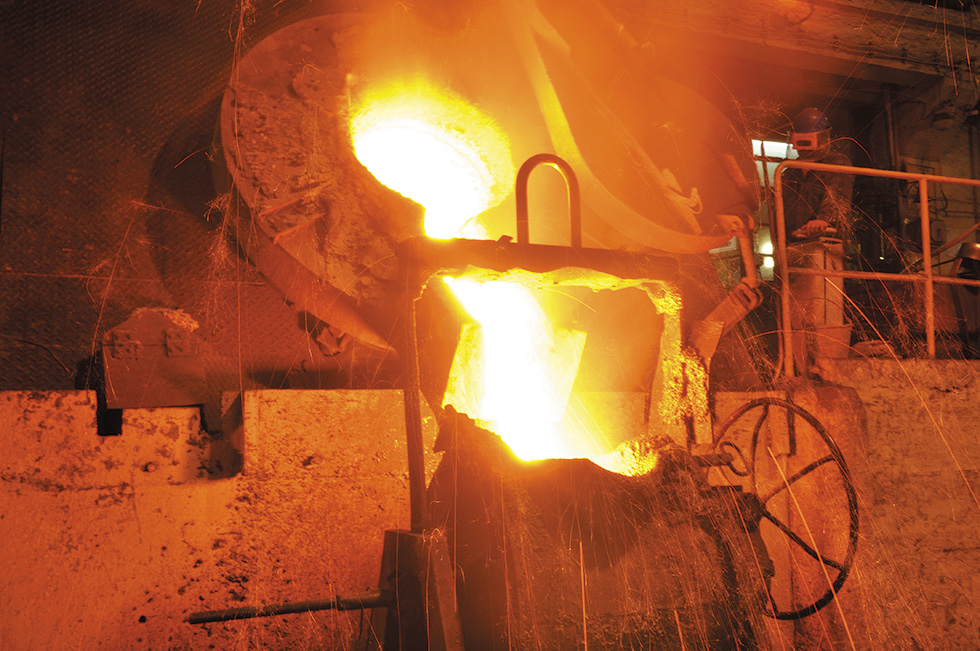
Projects
Currently, the entire effort of the staff is focused on the implementation of several programs, incl. Innotech project, i.e. research on the possibility of spheroidization and modification in a casting mold with the use of a reaction chamber. The company has also started preparations for the implementation of the innovative investment “Implementation of a new technology for the production of high-quality cast iron castings with above-standard stability of mechanical and functional parameters”. This program already has the necessary permits, documentation and bank contracts, it will be implemented under the technology loan. In the coming years, the management of the foundry will also work on a plan to improve quality and reduce scrap losses, and on a marketing plan that will help increase the number of new castings.
“The implementation of the first two tasks will provide us with a basis for improving the company’s competitiveness, and the subsequent ones will ensure financial stability and the possibility of implementing the necessary investments, for which we have planned PLN 15 million by 2020,” says Ryszard Kielczyk. – This will enable an increase in the production of high-grade cast iron, unit prices and sales, including a doubling of export sales.
Polish foundries on the world market
Thanks to the opportunities that were created after Poland’s accession to the European Union, Polish foundries, including the foundry in Drawski Młyn, have increased their quality and value many times. New technologies, the most modern machines and production lines, co-financing for many investments, and most of all the restructuring and privatization of the sector have created opportunities to compete with the whole world. Currently, the Polish foundry market ranks 15th in the world with the level of approximately 1.1 million tonnes of annual production. In castings of aluminum alloys, it ranks 10th in the world and 3rd in Europe. Foundries export over 50% of their products, mainly to Western Europe. Polish castings are purchased not only because of the competitive price, but also because they are good and meet all customer expectations. Many companies from EU countries, which have so far used foundries in China, India, Brazil or Turkey, are moving their production to Poland. Constant modernization and implementation of innovative technologies attract customers for many years. Non-ferrous metal foundries, especially aluminum, which develop technologically and increase the production potential, have full order books. Most of them are in a very good position. Iron foundries are usually profitable, although this is not the same level of profitability as for the production of non-ferrous metal castings. Nevertheless, there are record holders in iron foundries, fully comparable to the world’s best companies. There are also foundries that are weaker, underinvested and with a large share of manual work.
Recently, foundries with cupolas have had to adapt to the new situation, ie changes in coke prices, which increased by 50–70% overnight. However, the price of electricity did not rise during this time. In this way, the castings obtained from cupola have lost their competitiveness by 2–3%. A significant drop in production is recorded by cast steel foundries, as the interest in these products is declining.
“The situation of the Drawski Foundry is somewhere in the middle,” sums up Ryszard Kielczyk. – We operate normally, we are profitable and well perceived by customers. However, we feel an increase in coke prices and a decrease in demand for investment castings, e.g. agricultural machinery, plumbing and industrial fittings, or a reduction in orders from the infrastructure investment industry. Instead, we develop ductile iron production and export, because it is easier to find higher prices there. We are planning further investments, we want Odlewnia Drawski to be a fully European company in five years’ time.
Future problems
The biggest challenge related to the Polish market of foundries is the decreasing amount of steel scrap, especially cast iron scrap for production. Until now, the Polish foundry industry has functioned on the basis of Polish raw materials – scrap metal, pig iron, ferroalloys. Currently, there is no pig iron production in Poland, and domestic ferroalloys do not withstand the competition of imported ferroalloys. Fluctuations in the iron ore market, the zloty exchange rate, unrest and conflicts in the world rapidly change the prices of the feedstock in Poland. Price jumps can be as high as 50%. Such price increases cannot be directly and directly translated into casting prices, which reduces profits and increases the risk of making development decisions.
The situation in the country is not without significance. Late subsidies to farmers, the lack of new co-financing programs from EU funds and political uncertainty have led to a reduction in the number of infrastructure investments and the demand for machinery, especially agricultural machinery. All Polish iron foundries felt it by a marked decrease in demand for castings in these market segments.
“An additional problem that we are already facing, and it will continue to worsen, is the lack of qualified employees,” says Ryszard Kielczyk. – So there are challenges ahead. Firstly, wage increases, secondly, further investments in equipment that will replace workers, and thirdly, changes in technology that will lead to a reduction in labor intensity, in particular when grinding castings. ”
What about this competition
For several years, the positive trend of returning many global companies to purchasing in Europe has been intensifying. Poland is often the most attractive partner in this market. Due to the political turmoil, a large part of orders in Turkey is also directed to Poland. The main competition of Polish foundries are China, India and Turkey, where production is cheaper. “In China, the costs of wages, environmental adaptation and improved working conditions are rising all the time. It seems, however, that there are currently more orders from customers who have so far bought in China than customers who are leaving the Polish market, says Ryszard Kielczyk. – On the other hand, competition from India is serious, and it will continue to increase. India is at a stage like China was 10 years ago. India’s multi-processed cast is cheaper than our raw one. Labor costs have a big impact in underdeveloped economies. With modern devices and technologies, it does not matter that much anymore. This can be seen in Germany, which is the leader in Europe in the production of castings and at the same time has the highest wages. ”
The president of Odlewnia Drawski adds that 20 years ago, labor costs in the foundry accounted for over 50% of all costs. Currently, it is below 20%. Polish foundries achieved an average productivity of 25 tons of castings per one employee, currently it is over 40 tons. Some of them are equal to the world’s best foundries, reaching the efficiency of over 100 tons per one employee. Since the 1990s, the foundry in Drawski Młyn has increased its capacity from less than 20 tons to over 50 tons per employee, and this is not yet the end of its possibilities. According to the estimates and assumptions of the management, in five years’ time the productivity will amount to 70 tons per person.


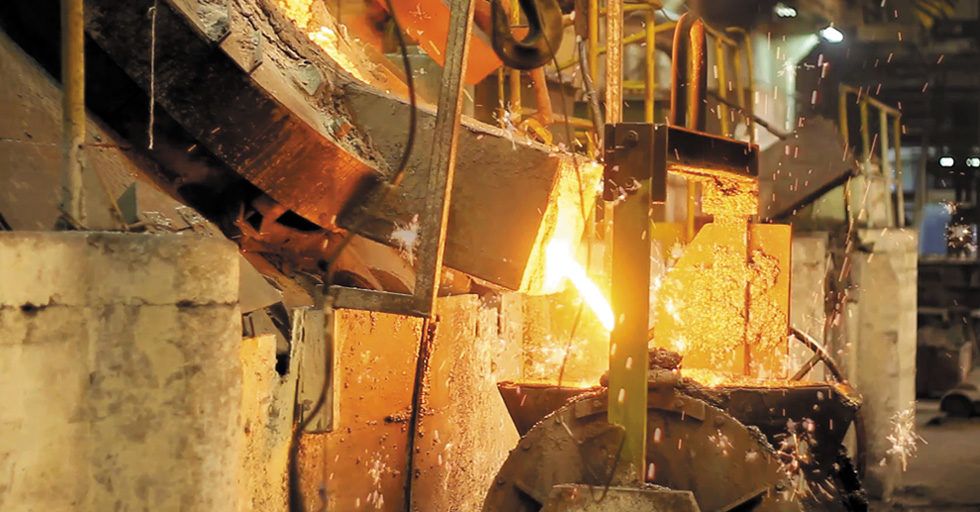

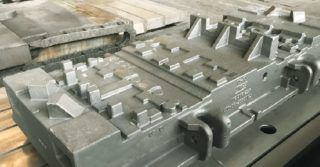
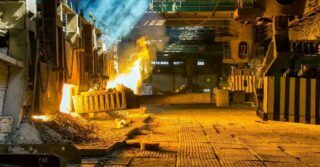
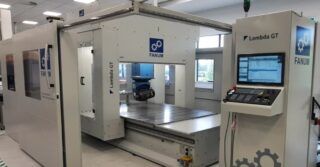
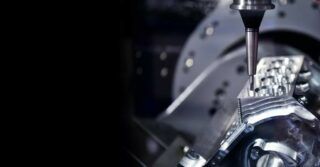
![By 2030, the market size of metal processing tools is expected to reach $120.44 billion [REPORT] By 2030, the market size of metal processing tools is expected to reach $120.44 billion [REPORT]](https://industryinsider.eu/wp-content/uploads/xcutting-tools-320x167.jpg.pagespeed.ic.SgnEk-RWA-.jpg)